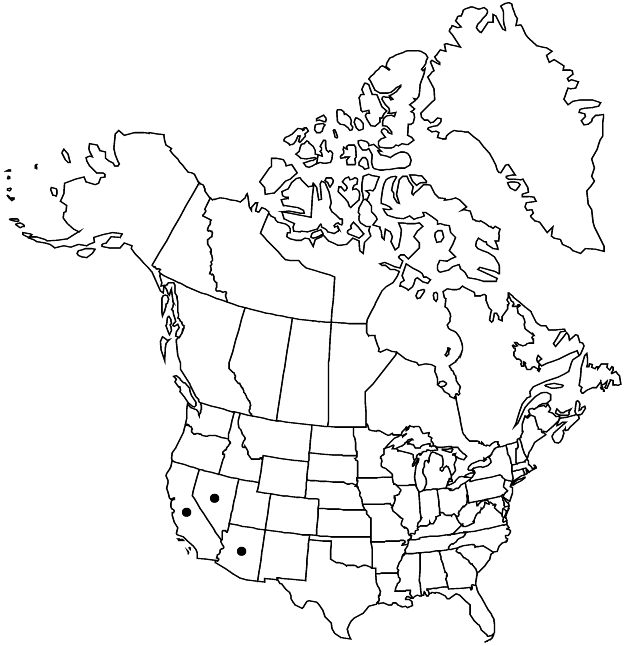Eriogonum plumatella
J. Acad. Nat. Sci. Philadelphia, n. s. 3: 45. 1855.
Shrubs, erect, not scapose, 3–10(–12) × 3–6(–8) dm, tomentose or glabrous, grayish or greenish. Stems erect, without persistent leaf bases, up to 1/2 or more height of plant; caudex stems absent; aerial flowering stems erect, slender, solid, not fistulose, 0.5–2 dm, tomentose or glabrous. Leaves basal and cauline, 1 per node; petiole 0.1–0.5 cm, mostly tomentose; blade oblanceolate, 0.6–1.5 × 0.2–0.3 cm, tomentose on both surfaces, occasionally slightly less so adaxially, margins plane. Inflorescences cymose, flat-topped and in tiers, 15–40 × 15–40 cm; branches dichotomous, divaricately arranged in a zig-zag pattern, tomentose or glabrous; bracts 3, scalelike, 1–7 mm. Peduncles absent. Involucres 1 per node, turbinate, 2–2.5 × 1.5–2 mm, glabrous; teeth 5, erect, 0.4–0.6 mm. Flowers 2–2.5 mm; perianth white to pale yellow, glabrous; tepals connate proximal 1/4 dimorphic, those of outer whorl obovate, those of inner whorl oblong; stamens exserted, 2–4 mm; filaments pilose proximally. Achenes light brown to brown, 2.5–3 mm, glabrous.
Phenology: Flowering Apr–Oct.
Habitat: Sandy flats, washes, and slopes, mixed grassland, saltbush, blackbrush, and creosote bush communities, oak and pinyon-juniper woodlands
Elevation: 400-1700 m
Distribution

Ariz., Calif., Nev.
Discussion
Eriogonum plumatella is encountered infrequently, primarily on the Mojave Desert, where it occurs in two forms, one with pubescent (var. plumatella) and one with glabrous (var. jaegeri) inflorescence branches. As both forms occur occasionally in the same population, the varieties are not considered to be taxonomically significant. Eriogonum plumatella occurs from Kern County, California, south through Los Angeles (including the foothills of the San Gabriel Mountains), San Bernardino, and Riverside counties to eastern San Diego County. To the east the species is found in Clark County, Nevada, and Mohave and western Yavapai counties, Arizona. A single specimen (Palmer s.n., GH) reportedly was gathered in Utah. Repeated efforts to find the plant in Washington County, Utah, have been unsuccessful, and the record is discounted here.
This species is the food plant for the rare pallid dotted-blue butterfly (Euphilotes pallescens pallescens). According to M. L. Zigmond (1981), the Kawaiisu pounded the seeds into a powder and made a mush. Given the small size of the achenes, and the paucity of large populations, the task of gathering sufficient seed must have been daunting. In taste, these seeds differ little from other, more common members of wild buckwheat, so it is likely that achenes of several species were gathered and processed into a watery meal.
Selected References
None.